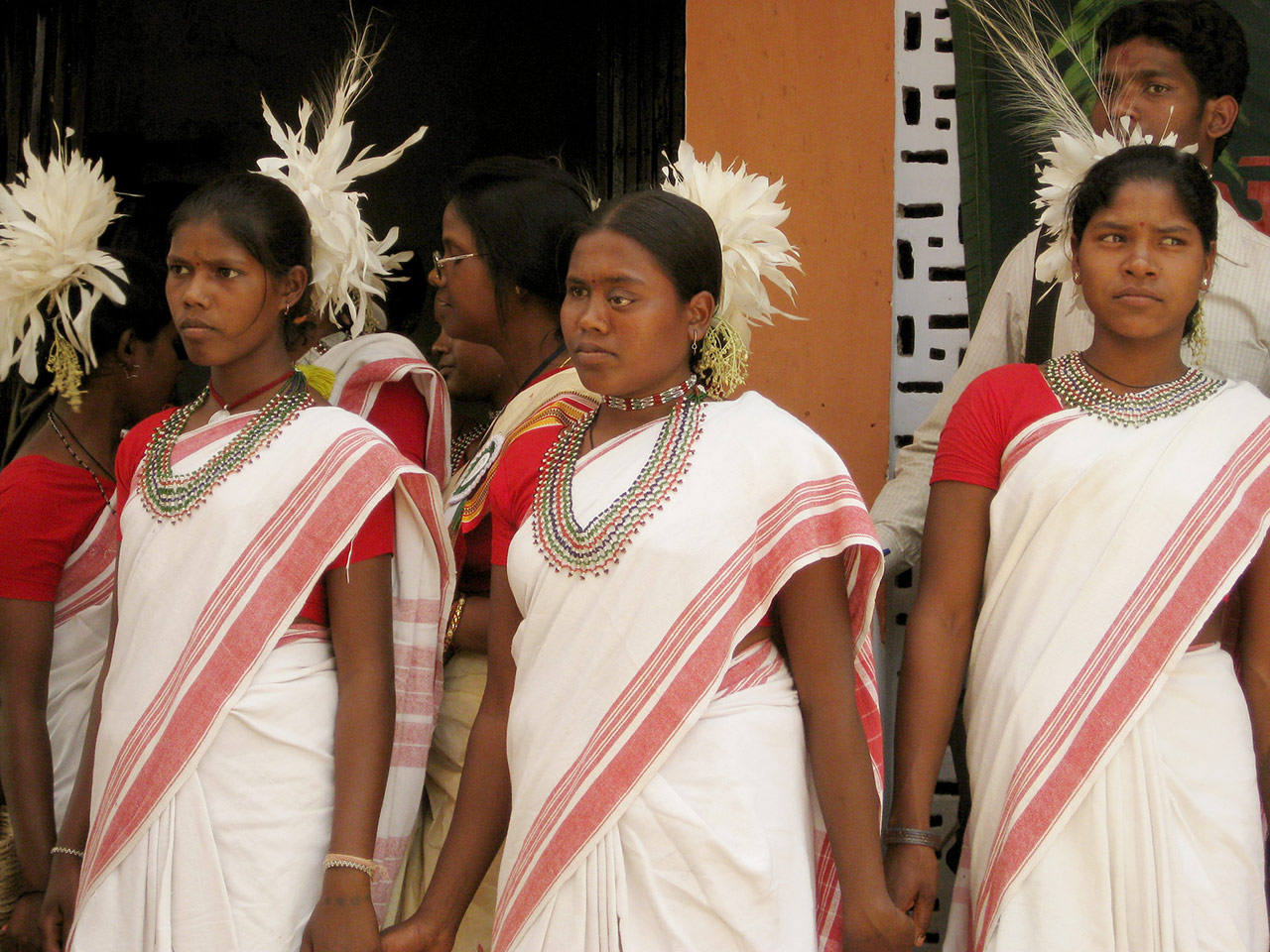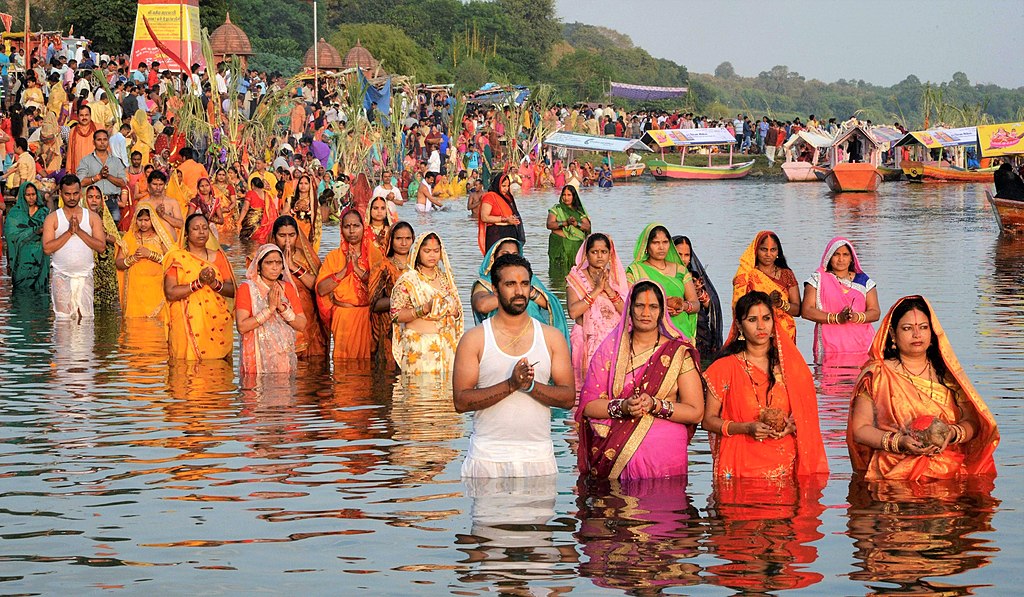
Ever heard of the other name of Jharkhand? It is Vanachal. Wondering what it means? Well, the term Vanachal means the land of woods, and hence it completely fits. The state is home to many tribal communities like Khadia, Santhal, Munda, Birija, and others. Tribal people in Jharkhand gave prime importance to nature. Even today, many people in the state derive a livelihood from forests, and the primary source of the economy is agriculture.
Let us take a glimpse into the culture of Jharkhand
History of Jharkhand

We can find references of Jharkhand in Vayu Purana and Vishnu Purana. In Vayu Purana, the place ‘Muranad’ in present-day Jharkhand. Similarly, the ‘Mund’ in Vishnu Purana refers to the region, which is present-day Jharkhand. Many travelers throughout history also refer to the area in their travelogues and historical works. These famous travelers include the Chinese traveler Yuwan Chwang, Iranian traveler Abdul Latif and the Iranian religious and spiritual teacher Mulla Bahbahani.
Looking back to prehistoric times, there are many monuments and artifacts which resonate with the stone age. Archaeologists found many polished stone tools, carnelian beads, pottery wheels, and bronze and copper ornaments. This shows the continuity of civilization(s) in the region throughout the paleolithic, Mesolithic, and Neolithic ages. However, most artifacts are of Neolithic origin.
The first archaeological finding in the region was that of the stone celt, and professor Valentine Ball found the artifact under Tamar block in Ranchi in 1867. Many discoveries in the valley of Asura, Koel, and Damodar rivers also show resemblance with the relics of the Indus valley civilization.
Many tribes have resided in Jharkhand from the beginning itself. The political, economic, or social systems were all under the control of tribal clans in the region. It was only after 1765 that the British took over the area and caused tribal displacement. The part also saw revolts by tribes against the British. Some of these dreadful scenarios involve the Paharia revolt, Manjhi revolt, Tamar revolt, Santhal Revolt, Munda revolt, and others.
Language of Jharkhand

The state’s official language is Hindi, and Hindi is the language that is mainly used for all purposes, judicial or otherwise. A large proportion of people in the state use the Hindi language. However, you might also encounter people talking in languages like Ho, Santali, Angika, Kurukh, and Mundari. In fact, in some parts of the state, Bengali is prominent.
Although the tribal languages are slowly moving towards their end, many regions in the state still converse in tribal languages. The Jharkhand government also tried to make four tribal languages obligatory for its government executives. These four tribal languages are Kurukh, Mundari, Santali, and Ho.
Cuisine of Jharkhand

The staple food of Jharkhand is rice, dal, and vegetables, and people prefer sunflower oil and mustard oil to prepare these simple foods. The famous dishes of the state include Chirka roti, pitta, Malpua, asra roti, dhudhauri, and Gupshup. The traditional food of Jharkhand is somewhat similar to the cuisines of Bihar.
Traditional Dress of Jharkhand

You would find most women in Jharkhand in simple sarees. Women’s clothing in Jharkhand is the traditional saree, and for tribal women, it is the Parhan or Panchi. In addition to this, women are also fond of accessories and ornaments of gold and silver and materials such as beads and gemstones. Men wear a single piece of cloth, Bhagwan traditionally. At the same time, other attires like the kurta-pajama, dhoti, and shirts form the casual daily attire.
Festivals of Jharkhand

Most of the festivals in the state trace origin and connection with nature. As the region is home to many tribes, the celebrations have a very simplistic and natural turn. People usually worship nature and objects of nature, for instance, trees and branches. Other than main festivals like Karam puja, Jitis puja, and Sarhul, people also show excitement towards annual fairs. Fairs and other occasions like Poush Mela and Tusu fairs give tribal people a chance to display their skills and folk belief.
Folk Music and Dance of Jharkhand

Folk music and dance is a necessary ritual of all events and occasions of the tribal clans. Hunta dance, Mundari Dance, Barao dance, seraikella dance, and danga forms a part of the famous tribal dances of the state. Other than these, there are many more tribal or folk dance forms. Chhau dance, a dance form based on martial arts, is very famous in the state, and it is a part of the Seraikela school of dance.
Coming to folk music, the tribes have formed their musical instrument bases and tunes. Janani Jhumar, Pratkali, Mardana Jhumar, fagua, and Adhratiya are some of the significant tribal music forms of Jharkhand. The prime instruments involve dhol, Mandar, bansuri, saragi, shehnai, nagara, and Kartal.
Suggested read – Folk Dances of Jharkhand – True Essence of Folk Culture
Architecture of Jharkhand

Unlike other states, Jharkhand now boasts various groups of temples that have disseminated their holy essence and symbolised their beauty via geometric and non-geometric carvings, which are really a landmark in the Jharkhand architectural scene. The three periods of temple architecture in Jharkhand may be grouped into three major categories: Naqara, Bengal or Hindu Mughal, and indigenous horizontal layer systems.
According to historical records, dynasties such as the Nagavanshi, Cheras, Singhbhum Rajputs, Ghatsila Dhol Rajputs, and Manbhum Rajputs, as well as certain feudal lords, built temples for public and private devotion. However, neighbouring states such as Orissa and Bengal had their own temple architectural traditions, and Jharkhand’s temples were inspired by these designs in many ways. From ancient times, Jharkhand’s temples have served as religious organisations. The Maluti set of temples in the east; the Baba Baidyanath network of temples in Deoghar in the north; the Doisagarh group of temples in the west; and the Lord Jagannath temple at Jagannath Pahadi, Ranchi have all influenced religious movements from various sectarian perspectives.

In Jharkhand, there are two separate and extremely different vernacular architectural styles: tiny huts or hutments and havelis (large mansions). Originally, the hutments were made of mud, sticks, grass, and stones. These homes were typically constructed by family members with the help of neighbours. Their modest beauty stems from the fact that they are less affected by self-conscious aesthetic endeavours and more from clean, utilitarian forms created by adapting local materials as efficiently as possible to reduce harmful environmental factors while using favourable ones.
The Havelis are a relatively recent addition to the family. Under the influence of the British, the region prospered in the late eighteenth and early nineteenth centuries, thanks to a growth in trade and commerce. Local merchants grew wealthy. In order to show off their money, a new architectural style arose that was designed to showcase the merchants’ affluence. Their homes were constructed of burned clay brick and inspired heavily by western elements. Local materials and craftspeople were used to construct these homes. The structures that emerged as a consequence of this process are significantly different from the previous kind, blending traditional and contemporary elements, but they are still vernacular since they are the product of local vernacularization of modernity.
Religion of Jharkhand
Jharkhand is a diversified Indian state having a diverse religious population, with Hinduism being the largest religion and Islam being the second most followed religion. The state also has a sizable tribal population, with Sarna sthal, a Hindu-like faith, being the predominant religion. In recent years, missionary operations have resulted in a huge increase in Christianity in Jharkhand, which now exceeds the national average of Christians in India. Agrahari Sikhs and Jains are a tiny group.
Occupations of Jharkhand

Jharkhand’s economy and business revolve around the different industries that exist in the state. Jharkhand’s business and economy appear to be an important part of the state’s administrative structure; it is this feature of the government that is assisting the state in meeting the difficulties of the industrial world.
When it comes to Jharkhand’s industry and economy, it’s worth noting that the state is home to two of India’s largest steel factories. The steel factories at Bokaro and the Tata Iron and Steel Company are the two most important plants in Jharkhand’s region. These steel plants provide a significant contribution to the economy of not only Jharkhand but India as a whole.
Despite the fact that Jharkhand’s area is rich in minerals, agriculture remains the primary source of income for the majority of tribal populations. In reality, agriculture is practised by nearly 80% of the population in Jharkhand.
Art and Crafts of Jharkhand
Paintings

There is no doubt that Jharkhand has the most spectacular collection of folk paintings and preserved arts and crafts. The unique folk painting of Jharkhand, Paitkar paintings are famous among artists and historians. Historians regard the paitkar paintings as one of the oldest tribal art forms in the state. Oraon paintings, commonly known as comb-cut paintings and wall art in the sohrai style, are some of the most famous art forms in the state.
Claywork

Jharkhand has a mine of skills for handlooms. You would see thousands of clay pottery designs, name one; you would find it the next second. Clay’s work in Jharkhand is on the next level, from animal figurines to detailed rural motifs to masks, people specialize in each.
Metal crafts

The metal craft of Jharkhand is something we need not even mention. It has been insanely famous all around the globe since the early times. The ancient metal craft of Jharkhand, Dokra, is still in practice and under preservation by the generations of the malhari and tentri tribes of the state.
The culture of Jharkhand is lavishly rich in spiritual terms. If you visit Jharkhand, keep in mind not to miss these parts. The best part about the state is preserving the tribal culture and walking on the lines parallel to the modern culture.





